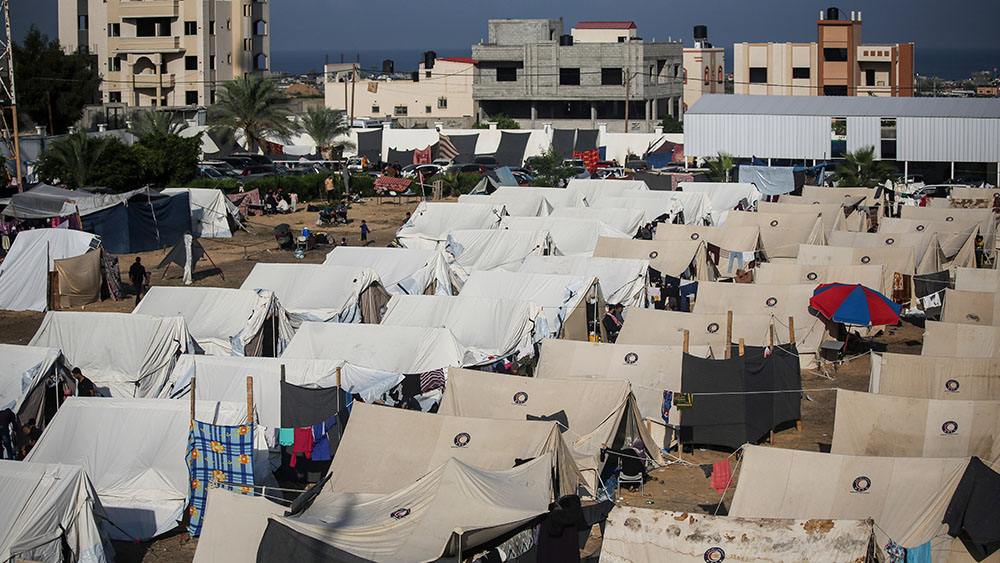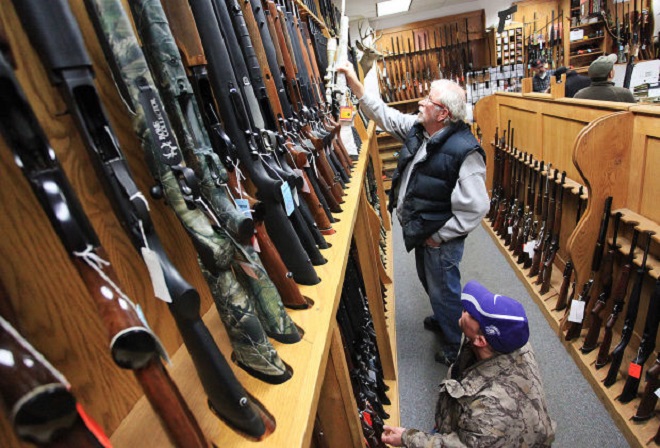
Protect your family from dehydration when SHTF by stocking up on water, using sturdy water storage containers and knowing how to filter and purify from various sources. (h/t to PreppersWill.com)
A growing population and water availability
Water pollution is on the rise due to various causes, like pesticides and untreated human wastewater. Unfortunately, many groundwater sources are also becoming more contaminated because industrial chemicals continue to leach into underground aquifers.
High levels of pollution can make you sick right away and cause massive illness outbreaks. Their effects can also be long-lasting and go unnoticed for years, causing widespread and often irreparable damage to the environment and public health.
The human population has more than doubled in the last 50 years, increasing the strain on the planet's resources due to industrialization and increased world hunger.
The global population has hit eight billion and more people are moving to cities, resulting in megacities that are now bigger than New York and London. This has also resulted in peri-urban slums where people live in close proximity to livestock.
Population growth in general and people's land-use decisions have resulted in increased encroachment on open spaces and ecosystem disruption. Because humans often settle down near water sources, the world’s population growth has put a strain on its water basins, reducing availability of fresh water on Earth. (Related: Prepper storage guides: Which containers should you use to store water for stockpiling?)
This highlights the importance of setting up a water supply if you want to help your family survive when disaster strikes.
Agriculture and natural disasters
A shocking 70 percent of the world's freshwater supply is used by agriculture, but at least 60 percent is wasted because of factors like ineffective water application methods, faulty irrigation systems and the cultivation of crops that require too much water in the wrong environments.
This then dries out the world's rivers, lakes and underground aquifers. In turn, countries are at risk of running out of water resources.
While natural disasters don't always result in long-term water scarcity, they still have a negative impact on communities in the short term, often causing increased disease transmission and pollution.
Hurricanes aren't the only natural disaster that can cause a water crisis. For example, Haiti experienced one of the world's worst earthquakes in 2010. The disaster claimed more than 92,000 lives.
Following the earthquake, a cholera outbreak linked to unsanitary water conditions killed almost 10,000 people. At least 890,000 Haitians were displaced because of the disaster, straining the already limited freshwater infrastructure.
The 2010 earthquake in Haiti proves that human migration and displacement exacerbate the scarcity of fresh water.
Stock up on freshwater for your personal and gardening needs
Don't be like civilians who don't prioritize storing fresh water in their survival stockpile. Even if there is no immediate and large-scale disaster, when SHTF you may face an event that causes subtle and gradual collateral damage.
You should also prepare for diverse disasters and water scarcity that can affect the area you live in. As preppers know, it's better to plan ahead since you should already know what disasters may affect you based on where you live.
Stock up on enough water so you can deal with long-term power outages or other scenarios that are frequent in your state.
Water storage options for your supply
There are many ways to store water on your homestead depending on the space, your budget and your knowledge of storage and filtration principles.
The Centers for Disease Control and Prevention (CDC) recommends that people should drink at least one gallon of water per day. But if you actually track how much water you need for other tasks, like cleaning and hygiene, you will need more than a gallon of water each day.
You have various water storage considerations depending on where you live. If you live in a desert with no readily available water sources, you will have to store water differently than if you lived in a rural area with a nearby stream and options to filter that water.
You should also stock up on more water if you are living with children, the elderly, pregnant women and pets. Based on your needs analysis, you need at least two weeks’ worth of drinkable water.
Store clean water in water-specific containers, like buckets or bladders designed for water storage. Choose containers that are made of sturdy and quality food-grade materials.
Do not use containers that were previously used to store chemicals or other potentially harmful or unpleasant ingredients or odors.
Here are some food-grade options to consider for properly storing water:
Collapsible water containers
Collapsible water containers have a great storage capacity. They often come with a spigot and a handle.
However, the materials used in these containers are not as rigid as those used in more permanent water containers because they are collapsible. Most collapsible water containers can hold three to five gallons, but it's better to avoid overfilling them because the increased pressure can cause them to rupture the longer they are kept in your stockpile.
Heavy-duty barrels
A 55-gallon blue barrel made of rigid, food-grade plastic can store enough water for one person for at least two months.
If you have a large family, you can either get more blue barrels or spend money on an upgraded version of a heavy-duty water container that can hold hundreds of gallons.
One downside to using these larger barrels is that once you decide on a storage location, it is almost impossible to move it once it’s filled with water.
Rain barrels
While some stored water is not safe to drink unless properly filtered and purified, water stored in containers like rain barrels is ideal for non-potable purposes like plant irrigation.
If you have a garden on your homestead and are worried about what to do with your plants during a water shortage, you can water them with collected rainwater in rain barrels.
Stackable water containers
Most stackable water containers are made of heavy-duty, dark plastic, usually color blue, and can be stacked on top of the other to maximize storage space.
The containers usually have a spigot and a handle to transport and dispense water and they can store five to seven gallons of water. The containers may cost $15 to $30 per piece.
When stacking these kinds of containers, avoid doing so excessively since overstacking can make the containers at the bottom crack under the weight.
Two-liter soda bottles
If you don't have the budget for expensive storage containers, two-liter soda bottles are a cheap and readily available option.
If you live in the city or a small apartment, collect two-liter soda bottles. After thoroughly washing the bottles, fill them with water and store the bottles in a closet or food pantry.
Water "bladders"
Large water "bladders" like a waterBOB are best for home use if you have a bathtub or large sinks.
These bladders can hold a large amount of water and some products can even store up to 100 gallons of water. They may also come with siphoning kits.
Water bladders also have some disadvantages. Since they are almost as big as a bathtub, you won't be able to use them unless you have more than one bathtub or shower.
Once filled, a water bladder is difficult to move since a full bathtub bladder can weigh over 100 pounds.
You can buy a heavy-duty water bladder that can be stored outside, but the material’s integrity might be jeopardized because of the heat or punctures.
Tips for long-term water storage
Once you decide on water storage options, keep these storage tips in mind:
- Store water in a dark and cool place to keep light from reaching it. This keeps the water as fresh as possible since water degrades faster when it warms up. You can store water under a stairwell or in a closet, but the basement is usually the ideal storage location.
- Do not store water in an attic or a garage where it can easily heat up due to rising temperatures.
- Non-commercially bottled water should be replaced every six months.
- Check the expiration date on purchased water to ensure that the product is safe for human consumption.
- If you have a rainwater catchment system at home, clearly label water meant for drinking and water meant for non-potable purposes.
Even if you're not a prepper, long-term water storage is crucial to your survival when disaster strikes.
Go to Survival.news for more tips on how to build a survival stockpile before disaster strikes.
Watch the video below for more tips on efficient water storage.
This video is from the glock 1911 channel on Brighteon.com.
More related stories:
Prepping 101: How long will bottled water last in your stockpile?
Prepping 101: Emergency water storage for beginners.
Safe water storage methods for home emergencies.
Sources include:
Please contact us for more information.























